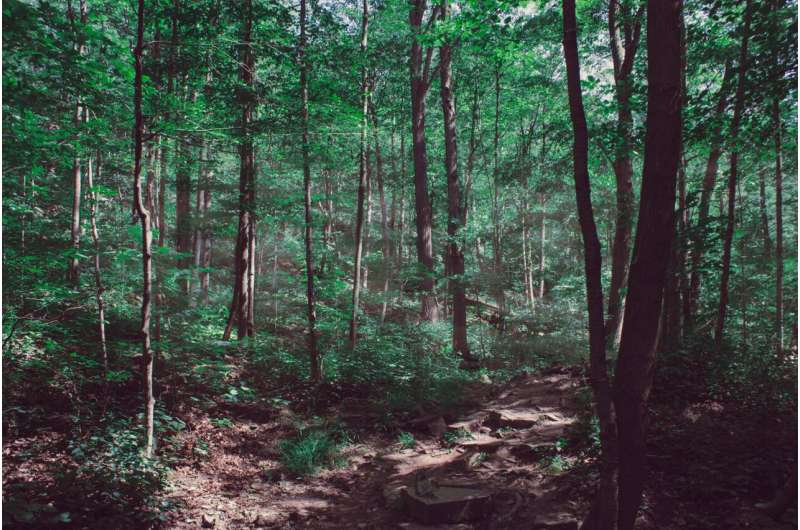This article has been reviewed according to Science X's editorial process and policies. Editors have highlighted the following attributes while ensuring the content's credibility:
fact-checked
peer-reviewed publication
trusted source
proofread
Researchers analyze link between forest structure and albedo in temperate secondary forest ecosystem

Reforestation can not only sequester carbon, but also change the surface albedo, which is an important intervention in climate change. How the canopy/understory structure of secondary forests formed after reforestation affects the seasonal variation of forest albedo, as well as the fraction of absorbed photosynthetically active radiation (FAPAR), remains unclear.
Researchers led by Li Shuangtian, a doctoral candidate from the Institute of Applied Ecology of the Chinese Academy of Sciences, have revealed the link between forest structure and albedo in the temperate secondary forest ecosystem. The study was published in Agricultural and Forest Meteorology.
The team continuously observed forest albedos and FAPAR, as well as seasonal changes in canopy and understory, in temperate forests using Qingyuan Ker Towers (three flux towers in a watershed: natural mixed broadleaved forest, T1; natural Mongolian oak forest, T2; larch plantation forest, T3).
They found that solar radiation (SR) and near-infrared (NIR) albedo of broadleaved stands were greater than those of coniferous plantation stands. SR albedo exhibited a seasonal unimodal pattern, peaking around the summer solstice when the solar radiation was strongest.
Besides the canopy, understory vegetation also contributed largely (>40%) to the change in forest albedo. In addition, the researchers found a co-benefit of FAPAR and albedo in the broadleaved stands (r = 0.69 and 0.93 for T1 and T2, respectively), but the co-benefit was weakened in coniferous plantation stands (r = 0.3 for T3).
Based on these findings, the researchers recommend that increasing vegetation green biomass as well as introducing broadleaved tree species into monocultural coniferous plantation are feasible forest management solutions to increase forest albedo and FAPAR to mitigate climate warming.
More information: Shuangtian Li et al, Seasonality of albedo and fraction of absorbed photosynthetically active radiation in the temperate secondary forest ecosystem: A comprehensive observation using Qingyuan Ker towers, Agricultural and Forest Meteorology (2023). DOI: 10.1016/j.agrformet.2023.109418
Journal information: Agricultural and Forest Meteorology
Provided by Chinese Academy of Sciences




















